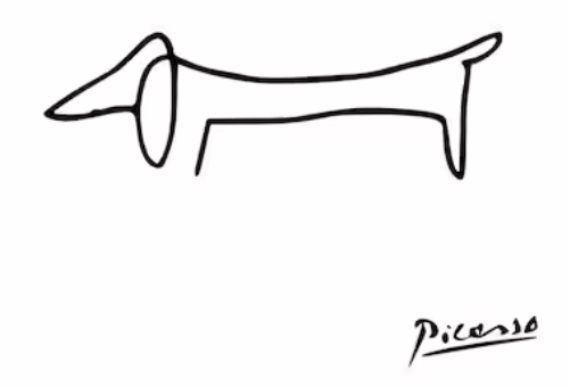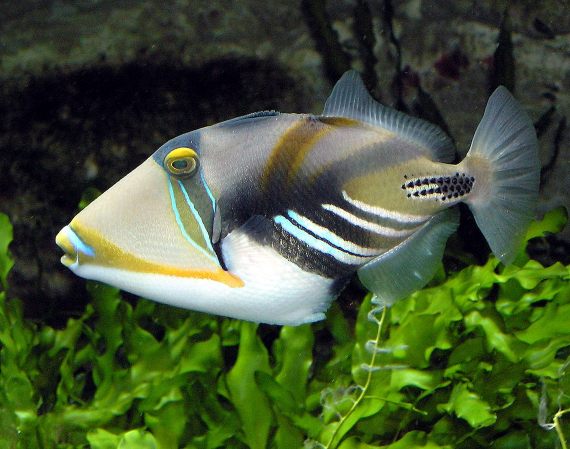Over the course of almost 70 years, Picasso (25 October 1881-8 April 1973) produced more than 50,000 works, including paintings, drawings, engravings, sculptures, ceramics, and lithographs, in different styles ranging from realism to cubism and even surrealism, impressionism and expressionism. Together with many human figures, these works depict a variety of animals and, to a lesser extent, plants.
This analysis examines two aspects of Picasso’s work in relation to these organisms. Firstly, it analyzes the animals and plants that appear in his work and the way in which they are depicted. Secondly, it explores how his work has been used to name and study some “spectacular” species and variants of living things that exist in nature.
NATURE IN PICASSO’S WORK
Picasso was a great animal lover and owned pigeons, fish, parrots, dogs, cats, and even goats. He carefully observed many of them to capture their shapes and the peculiarities of their movements, which he then tried to reflect in his works. The artist also enjoyed shows such as the circus and bullfighting, where he paid close attention to the animals taking part. Of course, he also considered the animals that had been painted before, from those in cave paintings to those of Velázquez or Goya, for example.

In addition, Picasso had direct knowledge of nature’s animals through the descriptions of the famous naturist, the Comte de Buffon. In the 18th century, this great scientist tried to gather all the existing information about living beings and minerals in his work entitled Histoire Naturelle, which consisted of 44 volumes, some of which were published after his death. In 1936, Picasso’s publisher and art dealer, Ambroise Volland, who knew of Picasso’s passion for animals, suggested that he illustrate a text compiling an anthology of Buffon’s descriptions. To do so, Picasso produced more than 50 illustrations in 1943. This text, known as the Picasso-Buffon Bestiary, was a gift the great painter gave to his then-lover, Dora Maar.
In the drawings he made to illustrate the text, Picasso depicted his vision of animals in a more or less realistic manner, from insects such as butterflies, dragonflies, bees, and wasps, to arachnids and crustaceans such as lobsters and lobsters, and other animals such as fish, roosters, vultures, frogs, wolves, deer, bulls, horses and monkeys. Other works by the artist include highly realistic animals such as pigeons, bulls, horses, donkeys, and his son Paulo’s painting of an equine, for example.
But perhaps what makes Picasso best known is that in many of his works animals appear more or less simplified, or, indeed, dislocated or distorted. On the one hand, we have the “schematic” drawings of pigeons, bulls, and the dog in his Meninas, for example. On the other hand, we have the horses and bulls included in, for example, Guernica. Our great artist also painted or depicted strange and mythological animals, such as the centaurs, fauns and minotaurs, omnipresent in the Vollard suite, for example. Even in some paintings with plants, he included small bulls with wings fluttering like bees around them.
Picasso did not pay as much attention to plants. They appear as a background in his landscapes and in some floral compositions, alone or around other figures, mainly women, or in the Dove of Peace. The forms of these plants are conventional, like palm trees, for example, or altered, and in any case, very colorful. Among his works on plants, the series of paintings he produced on the tomato plant on the balcony of the house in Paris where he lived at the end of the Second World War is particularly noteworthy. Although in these paintings he carried out a surrealist exercise to represent the tomato plant, in the end, the essence of the plant persists.
Tomato plant
PICASSO IN NATURE
Since he created his works, animals or plants have been found in nature which, because of their characteristics, have been associated with the name Picasso. They are organisms that, because of their spectacular shape or coloring, resemble or are reminiscent of one of his works. Various plant varieties, especially ornamental plants, such as cyclamen, cana, petunia, calla, calla lily, croton, iris, etc., have been named ‘Picasso’. The lily-iris-Picasso, to mention just one, has an extraordinary mixture of colors: bronzes, purples, yellows, greens, etc. A cross between different varieties of potato has resulted in a potato called “Picasso”, although this is not the case for tomatoes. It is a yellowish potato, but the buds, eyes, have a reddish color, so they have a very Picasso-like appearance.
Various animals ranging from insects to horses and fish have been named after Picasso. For instance, there is an insect with a morphology and coloring well worthy of being the work of our painter, which is why it has been associated with his name. It is an African bedbug belonging to the genus Sphaerocrocoris with an oval shape and whose shell on a bone-colored background has a series of spectacular green and pink motifs. There is also a moth belonging to the genus Baorisa whose coloring with spots and lines of different colors is also very spectacular, which is why it has been associated with Picasso, although it has also been associated with Miró. Going to the other extreme, in the western USA, wild horses have been found whose coats are a spectacular mixture of colors – white, black, red – and have therefore been called Picasso horses.

In the case of fish, there are two whose name is associated with Picasso. One is the so-called Picasso clownfish. These are fish with a pattern of pinkish-black spots on a white background spread all over their bodies. These fish are the result of crosses to obtain this color pattern from specimens from the eastern Indo-Pacific region belonging to the less spectacularly spotted Amphiprion perculata species. These fish have become very popular after the Disney films “Finding Nemo” or “Finding Dory”.
The second is a fish from nature. It is a group of species belonging to the genus Rhinecanthus that live in coral areas also in the Indo-Pacific reaching on one side as far as the Red Sea and on the other as far as Hawaii. They have a very colorful, rectangular-pebble-shaped morphology with different colored stripes. These fish are being used as study material for many different aspects of biology, so that the name Picasso is very much present in various fields of Natural Sciences. Their vision and navigation processes are being analyzed, and even the sounds they make, which are very peculiar when it comes to fish (1).

Let us conclude by mentioning the fact that one of the animals for which Picasso was most fond, pigeons, are “paying tribute” to him in another field of biology. Significant in this respect are the studies in which Picasso’s works – especially paintings in the Cubist style – are used in comparison with those of Monet – Impressionist – to try to see whether animals such as pigeons can distinguish them. These experiments show that pigeons, once trained by seeing works by one or the other, are then able to distinguish between them when presented with new works. It can even be seen that the pigeons can still distinguish Picasso’s cubist works when they are presented upside down, whereas this is not the case with Monet. These studies, which began in the 1990s (2), are now being continued with techniques that make it possible to identify which parts of the birds’ brains are involved in these visual recognition processes (3). Experiments in this field also show that very young children – under the age of one – prefer the works of Picasso to those of Monet (4).
We can therefore see how Picasso was able to capture the essence of the shapes and colors of nature and how his work can sometimes be reflected in it. This, among many other aspects, may well be the reason why he is one of the leading artists of the 20th century. In this century, Picasso’s name has even reached the “stars”: an asteroid in the belt between Mars and Jupiter has been named after him. Similarly, a strangely shaped crater with a large arc inside it on the planet Mercury has recently been named after the great Spanish-French painter, now 50 years after his death.
Manuel Ruiz Rejón
Referencias
- Chenney, K.L. et al. 2022. Seeing Picasso: an investigation into the visual system of the triggerfish Rhineacanthus aculeatus. Exp. Biol. Apr. , 225 (7): jab243907.
- Watanabe, S. et al. 1995. Pigeons,s discrimination of paintings by Monet and Picasso. Exp. Animal. Beh. 63: 165-176.
- Anderson et al. 2020. Pigeon…neural responses during categorization of Monet and Picasso paintings. Rep. 10:15971.
- Cacchione, T. et al. 2011. What is it about Picasso? Infants,s categorical and discriminatory abilities in the visual arts. Psychology of Aesthetics, Creativity and the Arts. 5, 370-378.
Comments on this publication